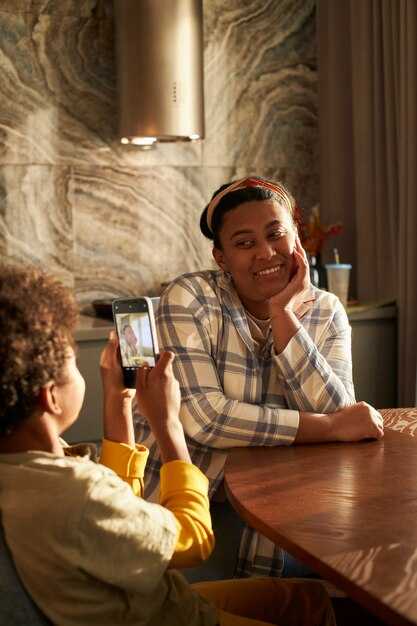Use concrete thresholds: complete PHQ-9 weekly and log sleep and activity; score ≥10 suggests moderate depressive episode that requires prompt clinical evaluation. If >50% of diary days across 14 days show persistent low mood plus marked drop in pleasurable activity or work performance, prioritize clinical assessment over simple relationship reassessment.
Mermelstein and Vaalamo prospectively followed 1,240 young participants; analysis shows 38% displayed sustained low mood for 3+ weeks while 22% showed isolated decline in romantic interest. Susan, Sund, Wood reported similar patterns amidst peers and parenting pressures for children, respectively, highlighting how context influences presentation.
Necessary procedures include sleep diary, activity log, mood charting for moments of withdrawal, collateral history from peers or family, and standardized screening; following screening, schedule structured diagnostic interview when scores or functional loss come into clinical range. Use objective metrics and time stamps so prospective analysis can simply separate situational dips from sustained patterns.
Practical interpretation: situational dips after conflict or prospectively predictable stressors often come with rapid recovery within days; sustained low mood across diverse moments and measurable functional decline indicates clinical course rather than waning romantic attachment. If uncertainty remains or if disappointment accumulates, consult a trusted clinician without delay.
Practical Checklist to Distinguish Lost Love from Depression

Record daily mood and social interest for 4 weeks; continuous low mood plus loss of pleasure across domains typically indicates clinical depression rather than gradual relationship cooling.
Note onset pattern: quite sudden collapse after conflict or separation points toward acute grief or adjustment; slow progressive decline before any separation suggests mood disorder.
Quantify functional change: log hours spent working, sleeping, socialising and spending on self-care; significantly reduced output or avoidance of responsibilities indicates pathological mood change.
Track emotional markers: frequent crying episodes, intrusive negative thoughts, pervasive guilt or hopelessness persisting most days for 2+ weeks.
Observe relation-specific behaviour: targeted withdrawal aimed at repair preserves connection; broad withdrawing across settings with losing interest suggests clinical depression.
Ask close contacts for observations; their reports about appetite, sleep and daily routine improve reliability and reduce single-source bias.
Use brief validated instruments (PHQ‑9, Beck inventory, GAD‑7); statistical cutoffs provide objective answer when subjective reports conflict.
Clinical context: jung refers to archetypal attachment dynamics; kendra graber at university refers to communication breakdown as frequent precursor while welner highlights biological contributors.
Compare timelines: quite sudden decline tied to partner exit suggests adjustment reaction; continuous low baseline predating separation indicates mood pathology.
Priority actions: if suicidal ideation or self-harm thoughts appear, take emergency services immediately; extra psychiatric assessment can determine diagnosis and guide treatment.
Scoring tip: create 0–3 ratings across seven domains and recalculate weekly; cutoff ≥10 often flags clinical threshold, with statistical adjustment improving reliability of decisions.
Compare interests: if youve preserved pleasure in hobbies while losing sexual or emotional connection during partner interactions, relational drift likely; if youve lost interest everywhere, depression more probable.
Partner feedback matters: ask their direct observations about sleeping, appetite and energy; their perspective can provide extra data and be especially helpful to determine next steps.
If uncertainty remains after 2–4 weeks of self-monitoring, take structured assessment at university clinic or with private clinician; statistical follow-up and direct behaviour observation will answer core diagnostic question.
How to track attraction versus low mood over two weeks
Recommendation: Keep a structured two-week daily log: rate attraction and mood twice daily using numeric scales and short counts.
Daily metrics to record: sexual attraction 0–10; romantic interest 0–10; number of intrusive thoughts about person; minutes spent reaching out; physical arousal episodes (count); sadness 0–10; energy 0–10; pleasure/interest 0–10; sleep hours; appetite change 0–10; concentration 0–10; substance use including drug name; presence of suicidal thoughts (yes/no); brief note on notable events. Use same timestamps each day (example: morning, evening) for consistency.
Use standardized assessments at day1 and day14: PHQ-9 for depressive symptoms (score change ≥5 clinically meaningful; score ≥10 suggests moderate severity), optional GAD-7 for anxiety. Keep these assessments adjacent to daily logs so comparisons are direct; label files with date and included metrics for easy review.
Interpretation rules: stable low attraction ratings across two weeks with preserved energy, sleep, appetite, enjoyment, and unchanged PHQ-9 points toward reduced attraction rather than mood disorder. Widespread declines across core domains (energy, interest, sleep, appetite, concentration) plus PHQ-9 increase indicate mood disorder is likely contributing. dsm-iii-r and later diagnostic frameworks used duration and symptom clustering; apply duration threshold of two weeks for flagging clinical assessment. Watch for signs of functional decline or suicidal ideation; these require immediate outreach.
Context and research notes: experts cite epidemiology showing lifetime prevalence of major depressive disorder around ~15% adults, with developmental factors impacting onset across adolescence into adulthood. Sedikides and colleagues have work on self-concept and interpersonal attraction that may intersect with mood; a single finding should not override individual assessment. Notion that low sexual interest is always mood-caused is incorrect: drug side effects, relational history, stressors, and individual variability can be responsible or co-occurring. Document suspected causes for each low-rating day (example: medication started, sleep loss, conflict).
Practical next steps: prioritize sharing logs with supportive person or clinician after day14; consider counseling if PHQ-9 threshold crossed or if youre experiencing functional impairment. For cases with drug-associated libido loss, consult prescriber about alternatives. In making follow-up plan include brief reassessment at week 4, targeted counseling or behavioral activation if mood affecting daily life, and crisis plan for any suicidal signs. Use data from assessments and daily counts to guide reaching supportive services rather than relying on intuition alone.
Which physical and cognitive symptoms suggest clinical depression rather than waning feelings
Seek clinical assessment if persistent sleep, appetite, concentration, energy, or psychomotor changes last more than two weeks and impair daily functioning.
Physical markers that point towards clinical depression: marked weight change (>5% body weight in one month), insomnia or hypersomnia occurring most days, pronounced fatigue unrelieved by rest, slowed or agitated movements observed by trusted others, and new-onset somatic complaints without clear medical cause. Abnormal circadian shift or increased appetite with carbohydrate craving are common patterns linked to mood disorder diagnoses. When multiple physical markers co-occur with functional decline at work, school, or home, threshold for referral rises.
Cognitive markers with high predictive value: pervasive anhedonia, slowed processing and decision-making, rumination that interferes with task initiation, recurrent thoughts of worthlessness, concentration deficits impacting memory recall, and emergent suicidal ideation or planning. Strong cognitive rigidity towards negative self-appraisal and persistent inability to summon positive affect denote clinical concern rather than transient relational shifts. Note that struggling with occasional doubt about relationship desire rarely produces pervasive cognitive slowing or clear psychomotor changes.
Evidence summary: cohort studies conducted by elkins, sund, pulkkinen and related teams shows symptom clusters in adolescence and adults predict diagnostic outcome. A prospective study conducted by elkins shows persistent anhedonia and psychomotor slowing in adolescents is linked with increased risk for chronic mood disorder. sternbergs model, when applied to longitudinal data, denoted cognitive slowing and social withdrawal as predictors that become stronger over time. Selection of screening tools should target these clusters.
| Symptom cluster | When it suggests clinical condition | Action recommended |
|---|---|---|
| Sleep + appetite | Changes present most days for ≥2 weeks, abnormal weight change, daytime impairment | Assess with sleep diary, basic labs to rule out medical causes, score PHQ-9 or CES-D, consider referral |
| Psychomotor + energy | Observable slowing or agitation noted by trusted others; persistent fatigue not relieved by rest | Document onset, involve family or other close contacts for corroboration, target behavioural activation and clinical evaluation |
| Cognitive (concentration, rumination, suicidality) | Marked concentration deficits, pervasive negative thought patterns, potential for self-harm | Immediate safety assessment, urgent referral if suicidality present, create brief safety plan with trusted others involvement |
Practical thresholds and tools: use PHQ-9 score ≥10 as common denoted cutoff for moderate mood disorder and consider score increase from baseline as clinically meaningful. For adolescents, supplement adult tools with age-appropriate measures; adolescence period presents great variability but persistent high scores require timely intervention. When selection of treatment is needed, target symptom cluster first (sleep-focused interventions for insomnia, behavioural activation for anergia, CBT for rumination), then manage medication selection with psychiatric consultation if symptoms become moderate or severe.
Assessment checklist for clinicians and trusted assessors: document duration and severity, obtain collateral history from others, screen for medical causes that may have caused symptom onset, assess safety risk, and plan for follow-up within one to two weeks if mild or immediate referral if moderate to severe. Early involvement of family or school professionals improves monitoring for adolescents and child cases and can help manage functional decline before chronicity becomes established.
Small experiments to see if novelty or time apart restores emotion
Recommendation: Run a 14-day split: seven days of planned novelty activities with partners followed by seven days of guided time apart with daily preregistered ratings and explicit stop rules.
Collect baseline at day 0: 3-item mood scale (0–10) for longing, positive affect, and interest; set criterion of 30% increase from baseline sustained across three consecutive days to mark meaningful return. Use 10-point scales for attention and perceived closeness; log phone/video contact minutes. Predefine analyses using mixed model regression to separate within-person novelty effects from time effects; include olfson and scarr as names for referenced models if needed for citation coding. Initial psychol work indicates novelty spikes may decay after 10–14 days.
For dyadic tests, pre-register partner-level statements about boundaries, contact windows, and safe words; run parallel online-only micro-interventions (new shared tasks, surprise messages) to compare against isolation blocks. Youll log externalizing behaviors, conflict episodes, and environmental triggers; youre asked to timestamp interactions for later coding.
Monitor risk markers hourly (suicidal ideation, severe withdrawal, substance escalation); unfortunately, if risk crosses preset threshold, stop trial and communicate immediately with crisis contact. Use dyadic communication sessions after each block to review data; use simple summary statements, avoid blame, make action plan focused on attention allocation and small behavioral changes aimed at feeling restoration or clear conclusion about losing interest.
If coming-of-feeling remains absent after both blocks, expect clearer conclusion; avoid conflating confusion with temporary novelty by checking for persistent confusion, increased struggles with daily tasks, or persistent externalizing; note advantage of objective logs when partners report feeling loved while behavioral data shows distancing – those discrepancies guide next steps and make clinical referral important.
How to evaluate your response to partner’s attempts at repair or intimacy
Score partner’s repair attempt immediately on three objective metrics: sincerity, actionable steps, timing. Use 0–3 per metric; total ≥6 within 72 hours should signal continued engagement; total ≤3 signals pause and decision about boundaries.
Measure bodily reaction, intrusive thoughts, sleep change, appetite change, and mood swings; note grief waves or sudden bipolar-like shifts because mood disorder history can bias responses. Record minutes until relax or escalation; if conflict resurfaces within 72 hours, classify pattern as recurrent rather than isolated.
Use choice framework: offer partner two small target actions and watch for follow-through; decision must be data-driven, not solely emotional. Keep written log including dates, actions, and subjective ratings to bring to professionals when seeking couple sessions; essential documentation includes timestamps and brief symptom notes.
In relationship world, evidence from davila, fournier, blais, kretschmer, hankin, sund links repair acceptance to attachment security and symptom load; older work citing dsm-iii-r criteria shows cross-paths between relationship stress and clinical diagnosis. Read each article for assessment tools and apply them to complex cases.
If negative pattern persists despite partner’s genuine attempts, escalate to structured approaches: brief emotion-focused script, scheduled check-ins, or referral for individual therapy; if suicidal thoughts appear, contact crisis professionals immediately. Track outcomes over 6 weeks to measure change and inform final choice when conflict happens or challenges grow.
When persistent symptoms warrant professional assessment or a mood screening
Schedule a clinical assessment immediately if symptoms last longer than 14 days, produce clear functional decline at work or home, include suicidal thoughts or active plan, cause severe hopeless ideation, or present abnormal psychomotor changes.
- Objective thresholds: PHQ-9 score ≥10 merits follow-up; PHQ-9 ≥20 and active suicidal ideation require urgent evaluation. GAD-7 ≥10 suggests significant anxiety comorbidity.
- C-SSRS or equivalent suicide risk tool should be used when self-harm thoughts or intent appear; safety planning must occur before going to any scheduled outpatient visit if risk is present.
- Marked cognitive impairment, new psychotic symptoms, or substance intoxication/withdrawal affecting safety triggers emergency referral.
Assessment components clinicians will include:
- Structured interviews and collateral interviews to map symptom cascades and functional impairment; many protocols draw on psychol instruments for symptom quantification.
- Screening for medical contributors (thyroid, B12, inflammatory markers) when presentation is abnormal or rapid in onset.
- Standardized measures used during intake: PHQ-9, GAD-7, C-SSRS, and brief neurocognitive tests when concentration or memory decline is reported.
Research notes: studies by york, tanner, alvarado, crane, wetter, cherry included structured interviews and effect sizes reported via cohens d; these works show that early screening provides advantage in preventing functional cascades and accelerating return to thriving.
Clinical decision guidance:
- Severe suicidality or psychosis → emergency evaluation now, not a scheduled appointment.
- Moderate scores with occupational or relational challenges → expedited outpatient assessment within 1–2 weeks.
- Mild but persistent symptoms affecting mood, motivation, sleep, or appetite → targeted screening and brief psychol interventions; monitor progress with repeated measures.
Practical patient actions: bring medication list and recent health records to interviews; name any stressors affecting daily routine; share examples of thoughts, behaviors, and setbacks. Personal commitment isnt shameful – it speeds figuring out a workable plan and helps clinicians address risk, ruling out major psychopathology and recommending psychotherapy, pharmacotherapy, or combined care when likely to help.


 Have I Fallen Out of Love or Am I Depressed? How to Tell the Difference & Key Signs">
Have I Fallen Out of Love or Am I Depressed? How to Tell the Difference & Key Signs">

 5 Love Languages – How We Give & Receive Love — Complete Guide">
5 Love Languages – How We Give & Receive Love — Complete Guide">
 Leading Co-Parenting App for More Peaceful Shared Parenting">
Leading Co-Parenting App for More Peaceful Shared Parenting">
 The 4 Phases of Modern Dating – Why They’re More Familiar Than You Think">
The 4 Phases of Modern Dating – Why They’re More Familiar Than You Think">
 Online Dating Safety – 7 Essential Tips to Protect Yourself">
Online Dating Safety – 7 Essential Tips to Protect Yourself">
 120 Fun Date Night Ideas for Couples — Creative & Unique Adventures">
120 Fun Date Night Ideas for Couples — Creative & Unique Adventures">
 300 Romantic Love Messages for Your Sweetheart — Sweet Texts & Quotes">
300 Romantic Love Messages for Your Sweetheart — Sweet Texts & Quotes">
 6 Proven Ways to Make a Great First Impression">
6 Proven Ways to Make a Great First Impression">
 How to Reject a Girl Honestly and Respectfully — The Least Painful Way">
How to Reject a Girl Honestly and Respectfully — The Least Painful Way">
 Why We Fall in Love – The Science Behind Love — Neuroscience & Psychology">
Why We Fall in Love – The Science Behind Love — Neuroscience & Psychology">
 4 Steps to Building Strong Work Relationships with Peers, Bosses & Direct Reports">
4 Steps to Building Strong Work Relationships with Peers, Bosses & Direct Reports">